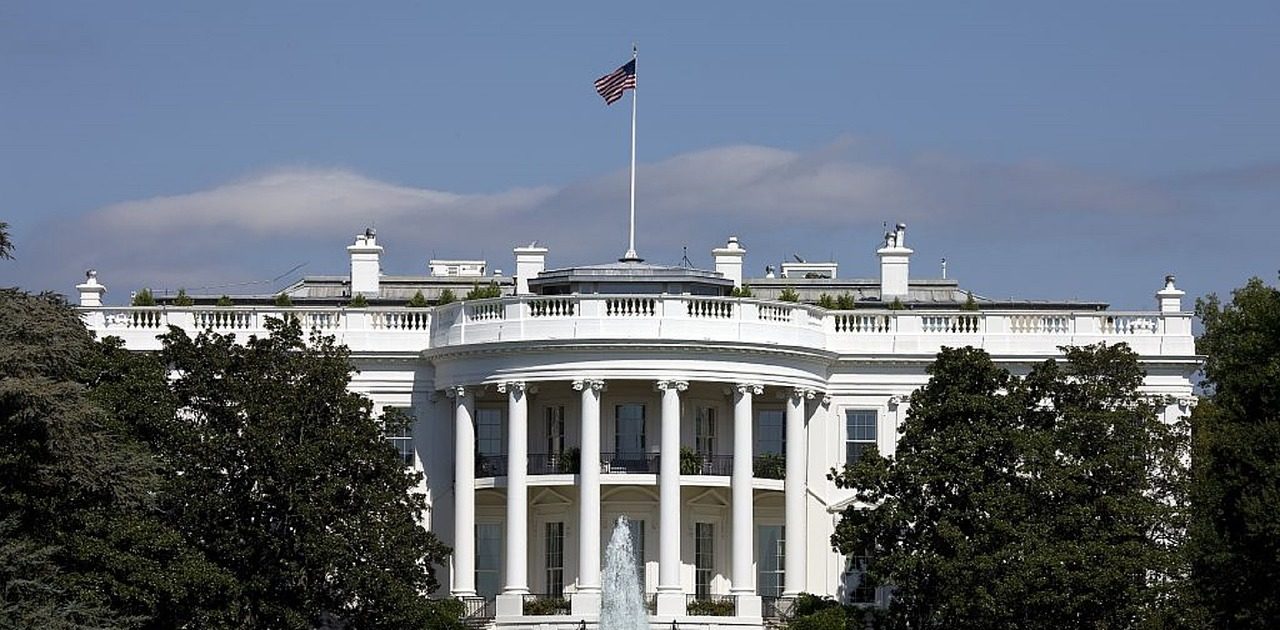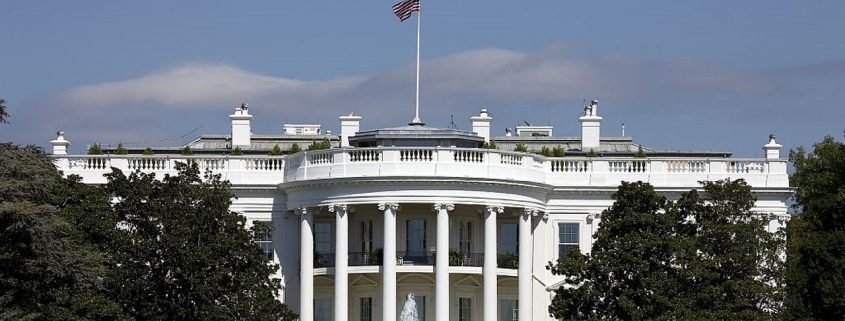Posts
CBO Paints a Bleak Picture for Future Non-Defense Spending
/in AFOP, From the Executive Director's Desk /by AFOP CommunicationsBy Daniel Sheehan
AFOP Executive Director
On January 24, the nonpartisan Congressional Budget Office (CBO) released its annual Budget and Economic Outlook covering the ongoing fiscal year 2017 and the ten-year 2018-2027 period and painting a very bleak picture for future spending. While I appreciate that budget matters can be a little technical and dry, I encourage you to read on so you can understand the fiscal realities facing federal decision-makers.
Of the big picture, CBO economists are said to be projecting real economic growth to stay just below two percent per year for the next decade, limiting how much federal tax receipts will grow. Inflation will also stay at about two percent per year, but rising interest rates will increase federal spending on debt interest significantly. The persistent structural imbalance between what the federal brings in and what it spends will mean ballooning federal deficits. CBO projects the deficit in the current fiscal year 2017 to be $559 billion; however, the office says the deficit will breach the trillion-dollar threshold as soon as FY 2023, reaching $1.4 trillion in 2027. The ten-year cumulative deficits over the 2018-2027 period are projected to total $9.4 trillion. When these deficits are added to the cost of federal loan programs also financed by federal borrowing, CBO projects that the public debt held will rise by $10.1 trillion over the next decade, reaching $24.9 trillion at the end of 2027. That amount would equal 89 percent of one year’s Gross Domestic Product (GDP).
Compounding matters is what budget analysts have predicted for decades: an aging population drives mandatory entitlement costs (like Social Security, Medicare, and Medicaid) higher and higher, while the 2011 Budget Control Act (BCA) constrains discretionary spending for the time being (and rising entitlement and net interest costs “crowd out” discretionary spending later on down the line). This is not just a macro level concern, because almost all federal spending on the workforce system is classified as “non-defense discretionary.”
The news is particularly bad for non-defense discretionary spending in the upcoming fiscal year 2018. BCA placed legally binding annual caps on total defense and non-defense discretionary appropriations. If Congress enacts appropriations bills that exceed the cap levels, another round of budget sequestration must occur to reduce all spending down to the cap levels.
You will recall that, back in 2012, the “Super Committee” (Joint Committee on Deficit Reduction) failed to agree on a deficit reduction plan, triggering a dramatic reduction in spending caps. Since then, two-year budget deals in 2013 (covering fiscal years 2014-2015) and 2015 (covering fiscal years 2016-2017) have raised the caps for those years in exchange for reduced spending in other areas down the road. As a result, however, the cap levels for 2018 are now lower, in nominal dollars, than the 2017 levels. The defense cap drops by $2.0 billion and the non-defense cap drops by $2.9 billion.
The CBO baseline for discretionary spending assumes the previous year’s appropriations plus an across-the-board inflation adjustment. (This year, it is two percent). Baseline appropriations levels for fiscal year 2018 are $53.1 billion above the combined cap levels ($13.5 billion on defense and $39.6 billion on non-defense). Even if you give fiscal year 2018 non-defense appropriations a hard freeze at the fiscal year 2017 levels (which are based on the ongoing continuing resolution, which is a hard freeze at the fiscal year 2016 levels for NFJP and most other U.S. Department of Labor programs), total non-defense appropriations would still be about $11 billion over the fiscal year 2018 spending cap, forcing another round of sequestration. The new president has discussed increasing defense spending above current levels and decreasing non-defense spending, but any cap changes would have to be implemented through legislation requiring at least 60 votes in the Senate for approval.
While budget problems pose, admittedly, very difficult challenges, Congress and the White House must and soon find a way to forge a bipartisan budget plan to preserve the BCA’s equal treatment of defense and non-defense discretionary spending, provide reasonable cap relief, and make the necessary long-term fiscal fixes to sustain adequate investments in the nation’s infrastructure and its people. These are the realities our leaders face, and these are the challenges they must overcome.
From the Desk of the AFOP Executive Director (July)
/in AFOP, From the Executive Director's Desk /by AFOP CommunicationsNew OT Rule Raises Question: Why Not Farmworkers?
/in From the Executive Director's Desk /by AFOP Communications
From the Desk of the Executive Director
Daniel J. Sheehan
AFOP Executive Director
The Center for Budget and Policy Priorities (CBPP) recently praised the Obama Administration’s new rule making millions of workers eligible for overtime pay as the president’s “most significant action on behalf of middle-class paychecks.” The rule boosts the threshold salary level under which salaried employees must be paid overtime (OT) from $23,660 a year to $47,476. Regrettably, though, and as the Association of Farmworker Opportunity Programs (AFOP) is quick to point out, the Nation’s farmworkers are once again left out of needed reform. The only unanswered question remains “Why?”
According to the CBPP, the new rule will directly affect 4.2 million workers. The Department of Labor says that is the number of salaried workers newly eligible for overtime pay. That is, their weekly salary stands between the current and the new threshold, between $455 and $913. CBPP argues that not everyone in that range will end up working overtime — though about 20 percent regularly do so — but if they do, they will now be eligible for the OT premium.
The Department of Labor also believes the new rule will also indirectly affect 8.9 million workers. These are also workers who earn between the old and the new thresholds, but the difference between them and the directly affected group is that these workers should already be getting overtime pay, but are not. The rules state that when someone’s duties at work are such that they are not bona fide exempt workers, they should be covered by OT. These workers tend to really not manage or supervise other workers — they are not recognizable as executives, professionals, or administrators — and thus should be non-exempt. Now, because their pay is under the new threshold, there should be no more ambiguity about their coverage status. That is about 8.5 percent of employment, affected directly or indirectly, says CBPP.
The Center concludes its analysis that the Administration’s action is a progressive change that was a long-time coming, one that will deliver a boost in pay to some workers and relief from unpaid overwork for others. It will transfer a relatively small amount of the nation’s wage bill from employers to workers, and in doing so, restore the purpose of a labor standard that is as important now as it was when it was first introduced in the 1930s.
But behind all the headlines is a strange fact about the U.S. job market that the new rule largely left unchanged: a huge list of American jobs are specifically exempt from overtime, most notably in AFOP’s case farmworkers. The Politico newspaper has reported that the administration’s overtime regulation estimates that up to 4.5 million workers fall into this category, including up to 900,000 in agriculture work.
According to Politico, some jobs are exempt for obscure reasons dating back to the 1930s, but there’s one big shift that has left some workers out in the cold. Decades ago, legal protections for many of them seemed less important—even undesirable—because they had the backing of powerful labor unions to negotiate wages and safe working conditions on their behalf. The decline of unions, however, has left such workers unprotected in the modern labor force, covered neither by the law nor by a strong union contract.
The overtime exemptions are as old as the underlying Fair Labor Standards Act of 1938 (FLSA). A host of political compromises left some workers out of the overtime requirement. Historians generally attribute the exemption for farmworkers to considerations based on race and the need to get the support of Southern lawmakers.
For other occupations, though, the exemptions have a more surprising origin: labor unions did not want those workers covered. Politico reports that many labor leaders worried the FLSA would limit their ability to collectively bargain with employers. For that reason, many heavily unionized industries, like trucking, are exempt from overtime regulations to this day; in the 1930s, the drivers just did not need the labor protections because their union was very strong.
When the FSLA was passed in 1938, 29 percent of all non-agricultural workers were in a union. That number peaked in 1954 at 34.7 percent. But today, it has plunged—just 7.5 percent of non-farm employees were unionized in 2015. Yet, the carve-outs remain, leaving millions of workers unprotected either by unions, or by federal overtime law.
The exemptions for the industries specifically mentioned in the FLSA—even for outdated reasons—are not something President Obama has the power to fix. They are written into the law, and Congress must act to change the statute, something it shows little appetite to do. State and local governments have attempted to fill some of these holes with labor regulations of their own, but many workers can still fall between the cracks, especially in states with weak labor laws.
The new overtime rule comes amid a broader debate about the future of the labor market, as more and more workers are classified as independent contractors. Under that classification, workers not only do not qualify under overtime and minimum wage laws, they also do not receive benefits like health insurance, pay into worker’s compensation and unemployment insurance, and are not covered my most anti-discrimination statutes.
Policymakers are grappling with how to ensure workers are protected in this changing work environment. Some have proposed a portable benefit package that accrues based on hours worked without ties to a singular employer. Two former Obama administration officials suggested a third worker classification may be needed for workers whose jobs do not fit neatly as either a traditional employee or independent contractor.
Politico contends that the future of overtime is intricately tied into these ideas, especially if the number of independent contractors continues to grow. The president’s new rule is a reminder that the labor laws of the 1930s may need a much deeper updating in the years ahead.
Readers can find TEN 36-15 — Department of Labor Wage & Hour Division (WHD) Overtime Final Rule – in the ETA Advisory database and at: http://wdr.doleta.gov/directives/corr_doc.cfm?DOCN=9467
From the Desk of the Executive Director
/in AFOP, From the Executive Director's Desk, Newsroom /by AFOP CommunicationsAlthough the year has hardly begun, the script seems already written for a difficult year for the budget and subsequent appropriations bills. If so, we can likely expect lawmakers to resort this fall to some form of a continuing resolution (CR) and/or a post-election omnibus spending package to complete the final business of the 114th Congress.
Washington calls each presidential election year the “silly season” for good reason. It is a time when serious legislating slows as elected officials seek to make political statements at the expense of compromise in an attempt to help their own election chances and/or that of their political party’s nominee for president.
At the outset of the silly season, things looked to be rather less silly and more much substantive. New House Speaker Paul Ryan (R-Wisconsin) and his budget and appropriations leaders all said they would return House processes to “regular order,” in which legislation moves from subcommittee to full committee and to the House floor for open consideration of amendments and passage. New Senate Majority Leader Mitch McConnell (R-Kentucky) echoed that sentiment. With that commitment in hand, the House and Senate Budget Committees began the process by drafting Congress’s spending blue print for the upcoming fiscal year 2017, set to begin October 1, 2016.
This optimism was understandable. After all, Congress and the White House late last year agreed to a plan setting higher defense and non-defense spending limits for this year and next, partially offset by certain program cuts.
Trouble for leadership started in January, however, when House conservatives, the so-called “Freedom Caucus,” said they want an extra $30 billion in cuts to non-defense funding. As a result of that call for cuts, budgeteers have slowed their work to a crawl as leadership decides how to overcome this divide.
Compounding matters is the fact that the Freedom Caucus is also demanding inclusion in the 12 yearly appropriations bills of several legislative riders that Democrats successfully turned back late last year as a part of the spending agreement. These changes are outside the legislative jurisdiction of the House Appropriations Committee, meaning the authorizing committees with jurisdiction will insist that the bills clear their committees, which will delay action. For their part, House Democrats will be unified in their opposition to these riders, and may attract sufficient Republican support to block the Freedom Caucus.
Thus, it seems likely that final resolution of the fiscal year 17 appropriations bills will occur during a lame duck session following the federal election in November. Congress will likely adopt a CR sometime in September to continue funding into the new fiscal year until lawmakers can move an omnibus spending bill to fully fund the federal government.
Despite the gloomy outlook for regular order this year, AFOP has written to appropriations leaders in both the House and Senate in support of workforce development, explaining the need for and success of the National Farmworkers Jobs Program.
In addition, AFOP, as a member of the Coalition to Invest in America’s Workforce (CIAW) – a coalition of diverse national organizations dedicated to helping people of all ages and conditions improve their skills, gain employment, and improve the competitiveness of U.S. businesses in today’s rapidly restructuring global economy – wrote last week to the Appropriations Committees urging them to provide the highest possible allocation for the fiscal year 2017 Labor, Health and Human Services, Education, and Related Agencies (Labor-HHS) appropriations bill.
In the letter, CIAW argues that, despite recent, modest funding increases, America’s education and workforce programs are still funded below their pre-recession levels. This has hurt our nation’s workers and businesses. Restoration of funding is necessary to sustain our economic competitiveness. Without meaningful investments in enhancing the skills of our workforce, skill gaps will stifle job growth and make a full economic recovery impossible.
According to the Center on Budget and Policy Priorities, the Labor-HHS Appropriations Subcommittee received an increase of 3.6 percent for fiscal year 2016 relative to its fiscal year 2015 funding level. Other subcommittees received an average increase of 6.9 percent. Accordingly, CIAW urged appropriators to ensure that the fiscal year 2017 allocation for Labor-HHS provides sufficient resources to achieve the following:
- Fund WIOA Title I employment and training programs at statutorily authorized levels so states, local areas and other partners in the public workforce system can fully realize the bipartisan vision outlined in the Workforce Innovation and Opportunity Act (Opportunity Act).
- Fund adult education and literacy programs under Title II of the Opportunity Act at least at authorized levels to ensure that the 36 million Americans with low basic skills are able to strengthen their educational levels to take advantage of emerging economic opportunities.
- Fund sufficiently Wagner/Peyser Employment Services (ES) activities under Title III of the Opportunity Act to give states the resources they need to provide intensive, in-person, reemployment services.
- Fully fund the Vocational Rehabilitation program and other employment services authorized under the Opportunity Act’s Title IV for adults and students with disabilities.
- Fund Opportunity Act youth programs to train the next generation of workers so they can become productive citizens, achieve their career goals, and contribute to their local communities.
- Fund job training and employment services for older workers and veterans authorized through the Older Americans Act and other laws at no less than level funding.
- Restore funding for the Perkins basic state grant program to pre-sequester levels to support our nation’s high schools, technical centers and community colleges in developing the highly skilled workforce demanded by employers.
You can be certain that AFOP is closely watching all appropriations developments in Washington, D.C. with the goal of seeing lawmakers approve robust funding for NFJP as well as make significant investments in America’s workers’ skills and education, so critical to businesses, workers, and the economy.
Home ∗ About ∗ Members ∗ Events ∗ H&S Programs ∗ CIF Campaign ∗ Contact
“AFOP does not discriminate on the basis of race, color, national origin, or handicap.”
© Association of Farmworker Opportunity Programs





